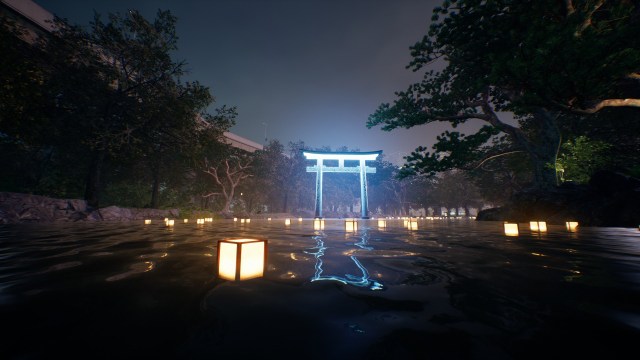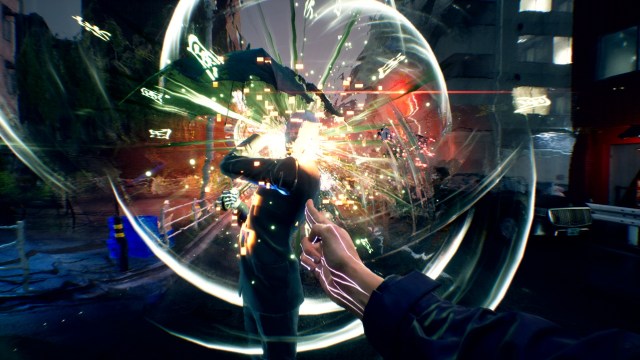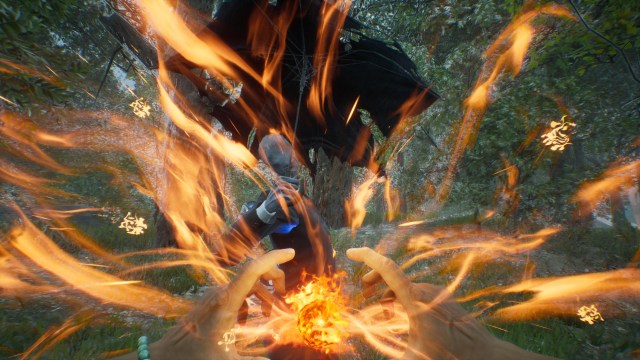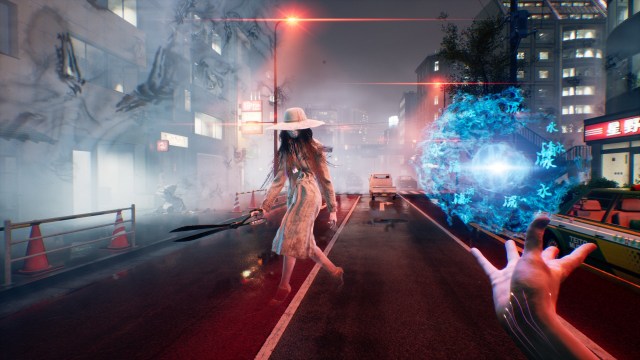The running narrative for Ghostwire: Tokyo was, “what is this game?” Despite showing up at so many different streams and presentations, it took months before what players would actually be doing came into view. And after playing through the game’s story, I can see why. Ghostwire: Tokyo is a fascinating experience for a lot of reasons, but underneath the cool stuff there’s a frustratingly boilerplate open world adventure.
Ghostwire: Tokyo starts just as a paranormal incident seems to be removing all human presence from the city. Akito, who was already dying from a motorcycle crash, manages to avoid the catastrophe, but is still, you know, dying anyway. That’s when a spiritual presence invades his body, giving him mythological superpowers and control over the three major elements. What follows is essentially a villain chase as the pair agree to work together to stop… whatever is happening.
Ghostwire: Tokyo Review

It takes hours, and then some more hours, before the story here moves past its opening premise. And even then, you only get tiny pieces of who these characters actually are until just about the halfway point. It isn’t a slow-paced game despite its genre, but it’s… uneventful. While Akito and KK seem to be an interesting, unlikely buddy cop sort of arrangement, there’s so little done to move these characters in Any Direction for so long that when there finally is some momentum, it doesn’t make up for the dead air.
Related: Ghostwire Tokyo Preview | A Spectral Spectacle
Especially since while Ghostwire: Tokyo is an incredible sandbox of videogame fidelity, it’s one in which you do the bare minimum of Ubisoft-style checklist gaming. You’re either running after Torii Gates to clear deadly fog, chasing one of a series of hidden collectibles, or doing side quests that contain the only bits of active storytelling you encounter for like ten hours. It feels like all the creative juice went to Ghostwire’s visuals and sound design, then filled in the rest after the well was drying.

Visually, this game is truly impressive. There are several display options, including some bespoke options for specific TVs. In the regular Quality mode, however, I was often taken aback by how the lighting, colors, sounds and pace worked together to make a Tokyo that felt alive despite literally having no living people in it. And the explosions of sound, color and hyperreal movement from combat layered on top made encounters with the “Visitors” feel special. For a little while, anyway.
Ghostwire moves at an odd clip, and I’m of two minds about it. One, just like Jesse said in our preview, walking around can feel like wading through mud. There’s an odd lurch to the default Look control, like Akito somehow encounters resistance every time he moves his neck. You can mess with sensitivity and even acceleration in the options, but it never quite feels as natural as you’d want. It can make frantic moments in combat extra fumbly, and it feels unusually easy to get stuck on geometry.

Combat also just doesn’t change much. You can upgrade your weapons but they don’t really change in function, and the enemies are really just a small group of repeating baddies spawning as obstacles. There’s an unsettling vibe at first, especially with those umbrella guys who skitter around unnaturally, but after a while it’s all fodder in the way of action items and collectibles. The hand signals Akito makes when changing weapons, using certain abilities or items or even just defending himself look incredible. But really you’re just gently tossing fireballs at mobs of brainless enemies.
Sound design really grabbed my attention at first. Ghostwire has a big emphasis on 3D audio, so the PS5 version is really impressive there. And because you’re wandering around an abandoned Tokyo, there are all kinds of weird diegetic musical intrusions coming from all directions. There’s also the Tengu fluttering above buildings, acting as grappling points. I hated everything about the Tengu, mostly because they constantly squawk at you, so loudly they almost drown out everything else. If being screamed at by giant crows appeals to you, then boy howdy here’s a videogame for you specifically.

The weirdest part about Ghostwire is the vibe you get from the aesthetics crashing into the premise. You’re wandering around an empty Tokyo, with no living humans anywhere around you. Yet, there’s a constant barrage of sickly sweet tunes and human voices from all the shops and advertisements still running. It’s like you’re being haunted by the ghost of capitalism, except it feels like a circumstantial element rather than a deliberate thematic intention.
After all the blockbuster presentation’s novelty wore off, I simply wasn’t buying what Ghostwire: Tokyo was selling. It felt like a chore to play, tons of busywork with no interesting payoffs around the corner. Every time some storytelling appeared I would be disappointed by its vapidity, and had to fight looking at my phone during cutscenes. There’s certainly value to the lizard brain checklist thing, and Ghostwire: Tokyo isn’t a bad time overall. It just isn’t interesting enough to justify spending more than a dozen hours running around and waving paper at ghosts.
Pros:
-Awesome production value
-Cool aesthetic that weaves the traditional into the contemporary
Cons:
-Aggressively unremarkable open world framework
-Sluggish and awkward movement controls/physics
-Storytelling that barely exists for several hours then expects you to be shocked by women in refrigerators
Score: 6.5
A copy of this game was provided by the publisher for review. Reviewed on PS5.





Published: Mar 21, 2022 09:00 am